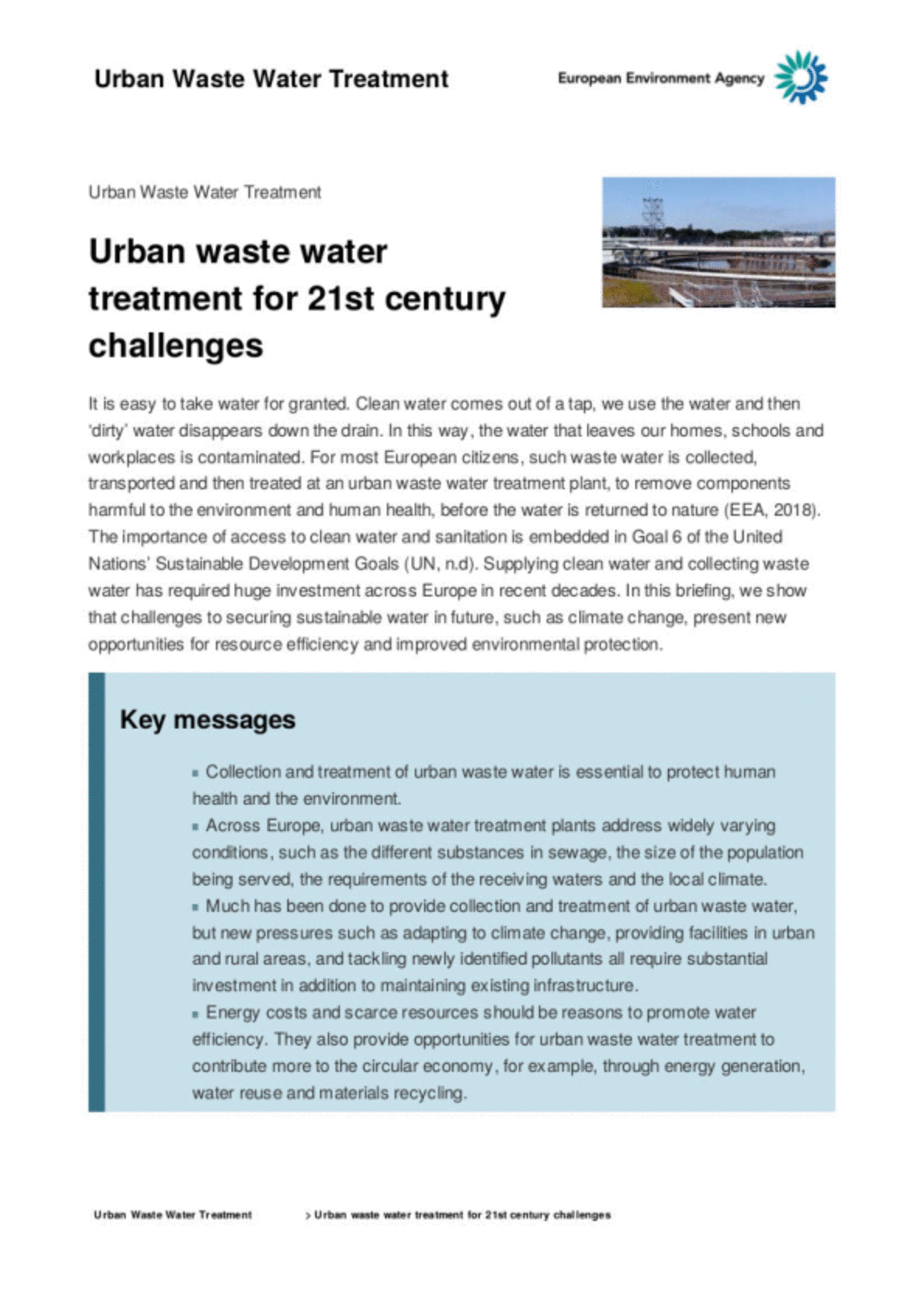All official European Union website addresses are in the europa.eu domain.
See all EU institutions and bodiesBriefing 5/2019
It is easy to take water for granted. Clean water comes out of a tap, we use the water and then ‘dirty’ water disappears down the drain. In this way, the water that leaves our homes, schools and workplaces is contaminated. For most European citizens, such waste water is collected, transported and then treated at an urban waste water treatment plant, to remove components harmful to the environment and human health, before the water is returned to nature (EEA, 2018). The importance of access to clean water and sanitation is embedded in Goal 6 of the United Nations’ Sustainable Development Goals (UN, n.d). Supplying clean water and collecting waste water has required huge investment across Europe in recent decades. In this briefing, we show that challenges to securing sustainable water in future, such as climate change, present new opportunities for resource efficiency and improved environmental protection.
ISBN: 978-92-9480-079-4

